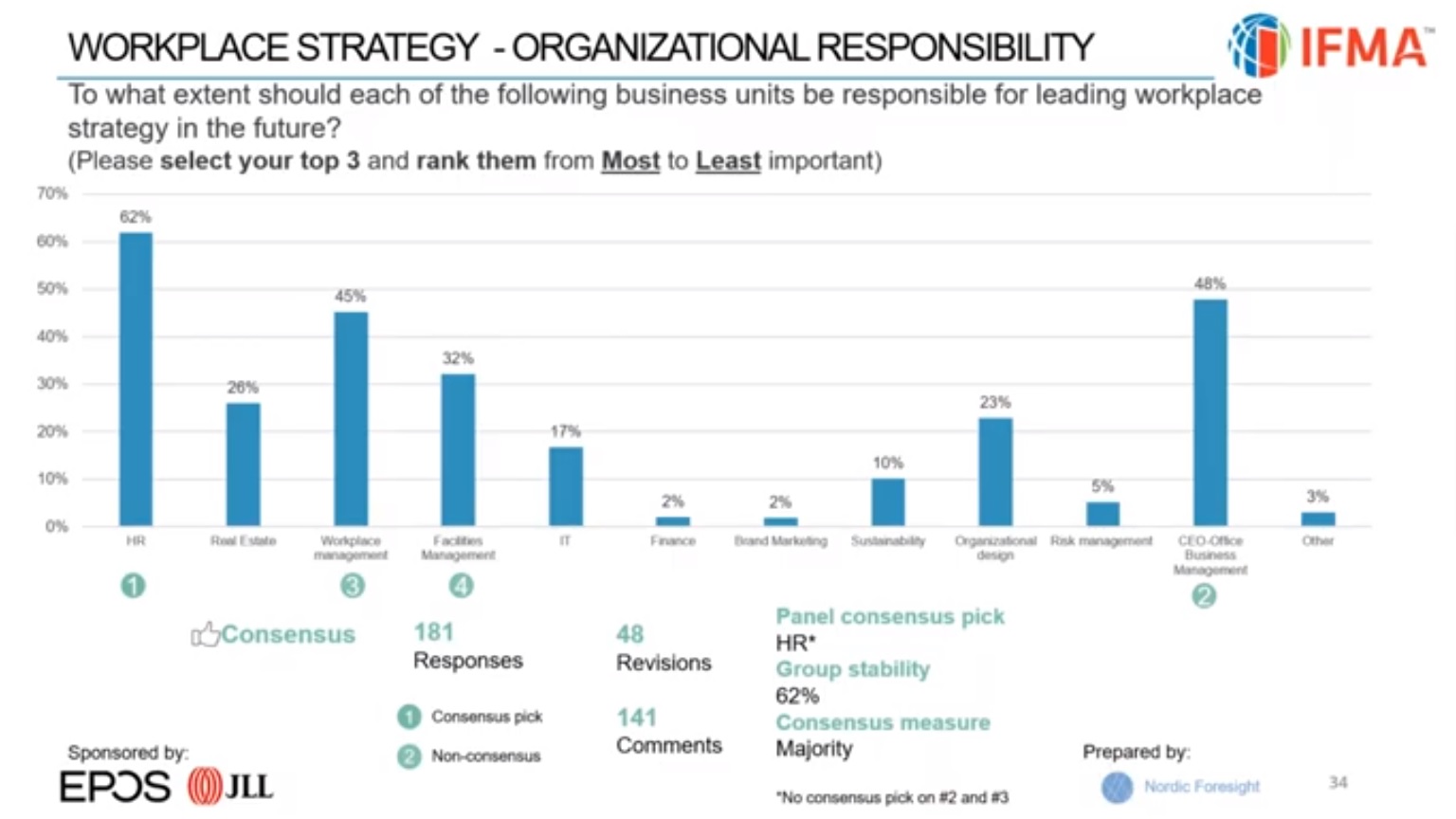There is no one-size-fits-all solution for organizations transitioning to a post-pandemic workplace setup. What is commonly referred to as a “hybrid workplace” will look different for every team, let alone for every organization.
The key to successful hybrid workplace design is the ability to engage all stakeholders in the creation process – employees, leaders, partners and customers. However, for most organizations the question of who is best positioned to take the lead on hybrid journey remains open. Until leadership is defined, implementation will mainly be driven by chance rather than by choice.
Elevating HR’s Strategic Role
Some curious results came out of recent research on the future of the post-pandemic workplace by International Facility Management Organization (IFMA). The objective of the study was to design an integrated data blueprint that would set out how companies can get most from their people, technology and places.
One of the questions brought to real-time discussion among 660 facility management industry experts was:
“Which business units should be the most responsible on designing workplace strategy?”
And the collective opinion looked as follows:
For some, such an outcome could raise eyebrows: an overwhelming majority of real estate professionals are effectively saying that their business vertical can no longer operate unless HRs take on the decision-making power and tell the real estate and facility managers what the workplace should look like.
As counterintuitive as that can sound, there is a lot of sense in this statement. The importance of putting employee experience at the heart of workplace design is undeniable. A modern workplace needs to be a meaningful destination, and the meaning of it is to be discovered through a holistic approach to what the components of employees’ day-to-day work journey are and how they complement each other.
Human Resources teams have been at the forefront of supporting employees throughout crisis times. They are the ones who know the inside outs of people’s everyday challenges at work. On the other hand, People Data analysts have done a tremendous job setting up an automated process of aggregating the data generated throughout the remote collaboration process.
In that way, the HR division has become the center of organization-wide data, which can be used in a very powerful way by the real estate division. When analyzed within a locational context (was the job done from the office, home, or a mix of both), this data can reveal very important clues on employees’ behavior patterns, preferences and pain points.
These insights should not be ignored, but rather applied for a focused approach when creating hybrid work policy for different teams and employee profiles.
Workplace Success is Everyone’s Responsibility
Clearly, it is not just HR teams who should be driving positive employee experiences. While HRs are potentially holding the answers for many business questions, it is up to the whole leadership team to effectively execute on the findings. C-suite, finance, facility managers and unit managers – all need to adopt new ways of working together and aligning their strategies and goals in order to ensure people’s success and business outcomes.
Only through leveraging integrated data can companies overcome the faulty notion of rivalry around splitting the budget among departments. And the challenge of re-inventing physical workplace delivers a perfect chance to build up that alignment, to make it more structured and meaningful than ever before.
From Hybrid Workplace Design to New Decision Making Model
The story goes way beyond just workplace arrangements and hybrid work policies. In fact, the shared data platform, initially built for solving a very specific need – discovering the best fit locational composition – can evolve into a new category of business intelligence solutions. It can form the new kind of ERP system.
For legacy enterprise resource planning systems, the atomic unit has been measured in dollars. For the new business context where intangible assets comprise the overwhelming part of an enterprise value, people have to be put at the center.
Business decisions have to rely less on purely financial models and be driven more by research and analytical data about people. The units of a firm’s success measurement need to encompass more of metrics such as employee engagement and performance, sentiment score and satisfaction rate, referral recruitment, and net promotion rate. All of those dimensions are going to be heavily driven by the quality of hybrid workplace decisions.
In order not to fall behind as business operations are resetting, it’s critical to be fast adopting data-driven approaches. On today’s agenda are the workplaces expectation among employees as well as among target talents in order to retain them. Tomorrow’s agenda could be even more dependent on the people data analytics.


